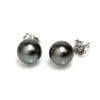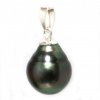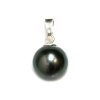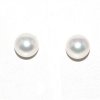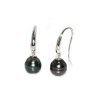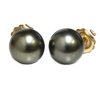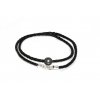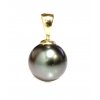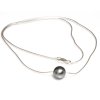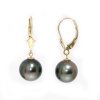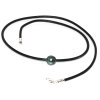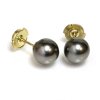Offering jewelry is not always easy. It all depends on what the person usually wears, the colors of the jewel, but also its use.
What is diamond crimping?
Placing a diamond on a ring to form a ring is not easy. There are professionals who specialize in this maneuver. This technique is called crimping. There are several types of diamond settings that inevitably influence the final appearance of the jewel as well as its maintenance. As a result, each type has advantages, but also disadvantages. Lonely men (with a single gemstone) are the most common, especially when you want to propose.
Types of diamond set
Each of the types presented allows the jewel to look different. The type of setting will also be chosen based on the shape and size of the diamond.
The claw-set
It's the most common. It is used when the diamond is pear-shaped. The diamond is held on the jewel by 3 to 10 claws. Because the diamond is not protected by metal, this type of setting will attract much more dirt and dust. This is the disadvantage of this setting, but it is also an advantage, because the diamond is almost uncovered, so the light is reflected more. Even if this type of setting gives us the impression of being a little light, it is certain that the diamond is very well held in place. This type of setting is used for a lot of jewelry and not just for rings.
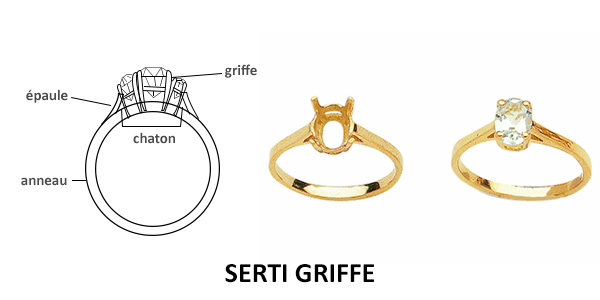
The halo setting
This type of setting is also chosen for engagement rings because its diamond, in the center of a halo of precious stones, appears more important. This setting allows for a multitude of different aspects, as it is quite possible to put a colored gemstone in the center in place of a diamond.
The enclosed setting
Timeless, the enclosed setting is one of the strongest types of settings. Indeed, the diamond in the center is surrounded by metal. This is a very good solution when you want to wear a ring every day. As with the halo setting, the diamond is reflected in the metal around it, giving the impression that it is larger.
The half-closed setting
Apart from the traditional enclosed setting, there is the half-closed setting. The diamond is surrounded by two metal strips on each side. Like the claw set, this allows the diamond to reflect much more light, but it will be more fragile.
The cathedral setting
This type of setting bears its name well, reminiscent of a Gothic cathedral. Indeed, the diamond overlooks the rest of the ring and is held in place by bows. The ring is much larger and larger, but will cling more to clothes. It is therefore a jewel that is not specially adapted to wear on a daily basis.
The setting tension
This type of setting is the most original. One gets the impression that the diamond floats, while it is held in small furrows dug laser in the two bars of the ring. This type of setting is extremely fragile, as the diamond can fall by wearing the ring every day or too regularly. The diamond is subject to all possible external aggressions.
The rail setting
The rail setting is very elegant, but also very sober. This type of setting can very well be worn by women, but also by men with small black diamonds. The diamonds are juxtaposed next to each other by forming a rail.
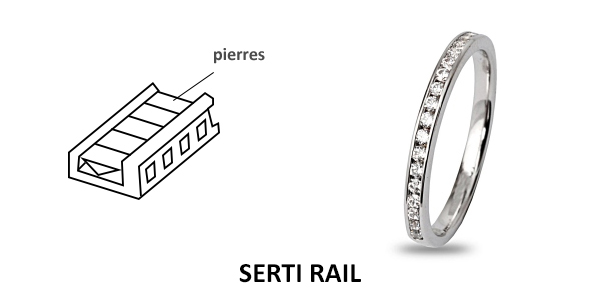
The set with shared claws
This type of crimp is an association between the claw-set and the rail setting. The diamonds are juxtaposed next to each other and kept between them not claws.
The box set
A variation of the rail setting, the diamonds are held together by small parallel bars.
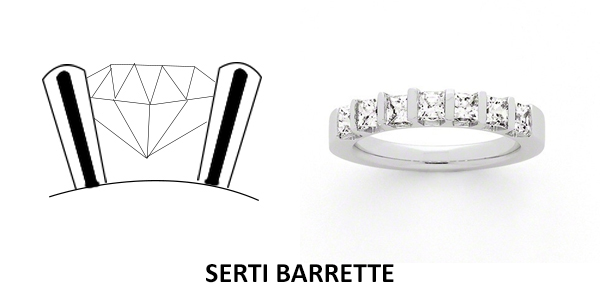
The cobblestone setting
A variation of the rail setting, diamonds are fixed by small claws that are so shiny that they look like tiny diamonds or small pearls.
The French cobblestone setting
A variation of the paved setting, it places the diamonds in V-shaped notches. This variant is much more elegant.
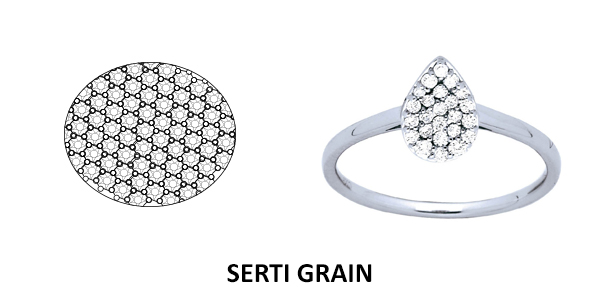
Conclusion
With all these types of crimping, you're spoilt for choice when it comes to selecting your ring. Now that you know more, it's up to you!

